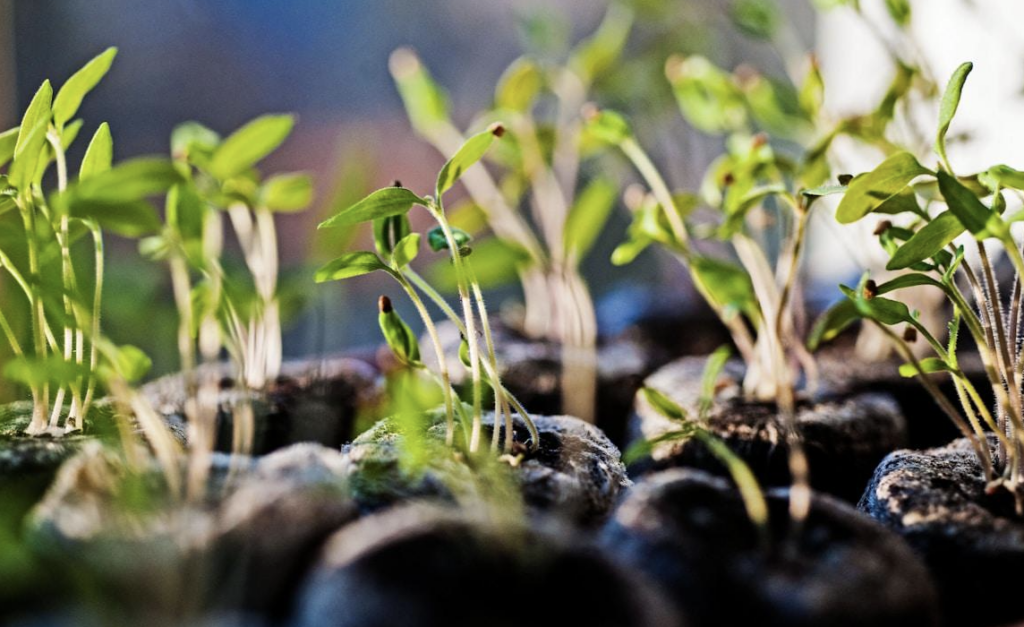
As winter lingers, gardeners in Zone 5 eagerly anticipate the arrival of spring. With a shorter growing season and unpredictable late frosts, proper planning and early seed starting are essential for a successful garden. Whether you’re growing flowers, vegetables, or herbs, getting a head start indoors will set your plants up for success once the weather warms up.
What Gardening Zone is the Denver Metro Area?
The Denver metro area primarily falls within USDA Hardiness Zones 5b and 6a, with some variation depending on elevation and microclimates. While most of Denver itself is classified as Zone 6a, many surrounding areas, including parts of Littleton, Highlands Ranch, and Castle Rock, fall into Zone 5b. Understanding your specific zone is crucial for selecting the right plants and timing your garden activities appropriately.
Plan Your Garden Layout
Before you plant a single seed, take time to map out your garden. Consider:
- Sunlight Requirements: Group plants according to their sun and shade needs.
- Companion Planting: Some plants thrive together, while others should be kept apart. Don’t let this intimidate you. Your garden will still thrive even if it isn’t planted perfectly.
- Crop Rotation: If you grow vegetables, rotating crops each year helps prevent soil depletion and pest issues. Again, don’t let this stress you out. I happen to like to plant my plants in the same spot year after year in my small garden because it happens to work out best. I just dig up the soil in the fall and spread it around and add fresh compost to keep the soil happy.
- Space & Growth Habits: Plan for how large plants will get to avoid overcrowding.
Choosing the Right Seeds
For Zone 5 and 6, selecting the right seeds ensures a productive garden. Some plants are best started indoors, while others should be directly sown outdoors when the weather permits.
Best Seeds to Start Indoors:
- Tomatoes
- Peppers
- Eggplants
- Broccoli
- Cabbage
- Herbs like basil and parsley
Best Seeds to Direct Sow Outdoors:
- Carrots
- Lettuce
- Radishes
- Peas
- Beans
Starting Seeds Indoors
Starting seeds indoors allows plants to develop strong roots before being transplanted outdoors. Follow these steps for success:
- Choose Quality Seed-Starting Mix: Regular garden soil is too heavy for delicate seedlings. Opt for a lightweight, well-draining seed-starting mix.
- Use Containers with Drainage: Seed trays, peat pots, or even repurposed containers work well, as long as they have drainage holes.
- Provide Adequate Light: Place seedlings near a south-facing window or use grow lights for 12-16 hours per day. This is important. If they don’t get enough light, they won’t be strong enough to transplant. If you don’t have a window with enough light you could use something fancy like this or as simple as this.
- Maintain Consistent Moisture: Keep the soil moist but not waterlogged. Using a spray bottle to mist the soil can prevent overwatering. Use a cover when the seeds are germinating to help keep the soil moist but don’t over water or they will get moldy.
- Monitor Temperature: Most seeds germinate best between 65-75°F. Consider using a heat mat to keep the soil warm.
- Harden Off Before Transplanting: About two weeks before moving seedlings outdoors, gradually expose them to outdoor conditions by placing them outside for a few hours each day.
Timing Your Planting
The last frost Date is typically around Mother’s Day each year. That’s when it’s finally safe to plant warm weather plants like tomatoes.
A general guideline for indoor seed starting:
- 8-10 weeks before the last frost: Peppers, eggplants, onions
- 6-8 weeks before the last frost: Tomatoes, broccoli, cabbage
- 4-6 weeks before the last frost: Herbs, marigolds, zinnias
Additional Tips for Gardening in Denver’s Climate
- Be prepared for late frosts: Colorado’s weather can be unpredictable. Keep frost blankets on hand to protect young plants if temperatures drop unexpectedly.
- Mulch to retain moisture: Denver’s dry climate can quickly dehydrate soil. Use mulch to help retain moisture and regulate soil temperature.
- Consider raised beds: They warm up faster in the spring, provide better drainage, and help extend your growing season.
- Use season extenders: Cold frames and row covers can help you start your garden earlier and protect plants from late spring cold snaps.
By planning your garden, understanding Denver’s unique growing conditions, and starting seeds indoors, you can maximize your growing season and enjoy a bountiful harvest. With a little patience and preparation, your garden will be ready to thrive when spring finally arrives.
If you’re looking for a place with a yard or a land for that greenhouse you’ve been dreaming of, give us a call. We’d love to help you find a place to plant your Dream garden.
Happy gardening!
